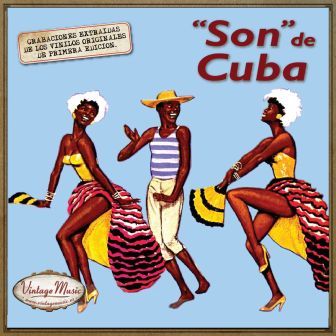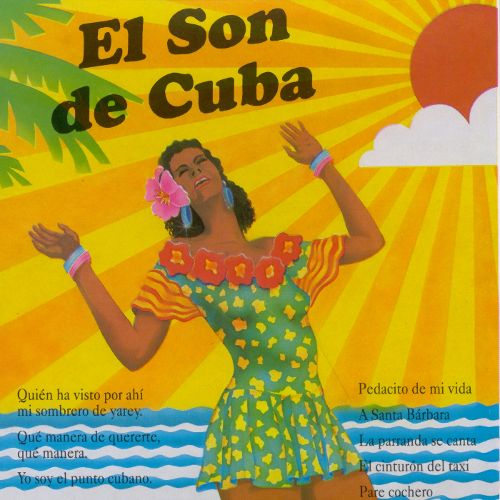For the interpretation of the Cuban SON, a good number of musical elements are required.
Its origin has to be sought by several cities in the eastern region such as Guantanamo, Baracoa and Manzanillo, where the letter of a son claimed that it was the city in which “the son is danced in underwear and nightgown” and its appearance entails the interpretation of one of the first known as ‘EL Son de la Ma Teodora’ of 1562 of the Dominican sisters Ginés, two black libertas both from Santiago de los Caballeros in the province of Santiago, today Dominican Republic and later they went to reside in Cuba. To Teodora and Micaela her talents for music led them to become part of the Santiago de Cuba cathedral orchestra, with Jacome Viceira, a Portuguese clarinet performer and the violinist from Málaga, Pedro Almaza; Teodora playing the Bandola and Micaela the violin.
We see the music being unfolded and we find the guajira-son, the bolero-son, the guaracha-son, the rumba-son, the guaguancó-son. Also, many rhythms have their origin in the son, so we have the Sucu sucu, the Pilón, the Mozambique, the Salsa, and even the reguetón-they are, yes, because of the fusion.
The Matamoros Trio founded in 1920 is the oldest flagship format of sonero trio. With the rise of the genre and its commercialization the format was expanded and it was growing of quartets, sextet, septet, sound, ensembles and orchestras.
The most used instrumental training currently is piano, guitar, bass, bongo, maracas, clave, trumpet, tres, voice, tumbadoras and other elements of percussion.
A significant part of the son is the so-called Montuno, which is not a musical genre. The emergence of this word comes from the mountain term, initially applied in the eastern territory of the country.
https://youtu.be/boC9peNWuKo
According to the musicologist and historian Radamés Giro “after the expressive or narrative part of the piece is that it goes to part B, which is the montuno proper, and in which the soloist alternates- who improvises-and the chorus answers, in the responsorial way of music of African background. In it a wide use of syncopation is made. We can say that the Montuno is the one that incorporates a special flavor, tasty, that increases the one that already brings the son, the guaracha, the rumba. ”
In 1971 the researcher Alberto Muguercia questioned this theory arguing that the “Son de la Má Teodora” was just a song and that in 1562 there were no instruments used in the Cuban son genre. Muguercia and other researchers, such as Danilo Orozco, set the origin of the son in the mountainous area of the Sierra Maestra, in the province of Oriente, around 1880 and its popularization took place in 1892 when Nené Manfugás brought this rhythm to the carnivals of Santiago de Cuba
In any case, Teodora Gines is credited with the song “Son de la Má Teodora”. This song was transcribed by the Cuban Laureano Fuentes Matons, in his book «The arts in Santiago de Cuba», published in 1893. Matóns argued that the “Son de la Má Teodora” was the first sound of history.
Lyrics of Son de la Ma Teodora
This song was interpreted in the typical way of singing and responding.
* Where is Má Teodora?
Chopping the wood is
With his stick and his bandolier?
Chopping the wood is
Where is it that I do not see it?
Chopping the wood is
DE MI CUBA, EL SON ES LO MÁS SUBLIME. Video.
Para la interpretacion del SON Cubano se requieren un buen número de elementos musicales.
Su origen hay que buscarlo por varias ciudades de la región oriental como Guantánamo, Baracoa y Manzanillo, donde la letra de un son aseguraba que era la ciudad en la que “¡se baila el son en calzoncillo y camisón¡” y su aparicion conlleva la interpretacion de uno de los primeros conocidos como es ‘EL Son de la Ma Teodora’ de 1562 de las hermanas dominicanas Ginés, dos negras libertas ambas procedentes de Santiago de los Caballeros en la provincia Santiago, hoy República Dominicana y más tarde pasaron a residir en Cuba. A Teodora y Micaela sus talentos por la música las llevó a formar parte de la orquesta de la catedral de Santiago de Cuba, con Jacome Viceira, un portugués ejecutante de clarinete y el violinista malagueño Pedro Almaza. Ella tocando la Bandola y Micaela el violin.
Vemos al son desdoblarse musicalmente y así encontramos la guajira-son, el bolero-son, la guaracha-son, la rumba-son, el guaguancó-son. También, muchos ritmos tienen su origen en el son, así tenemos el Sucu sucu, el Pilón, el Mozambique, la Salsa, y hasta el reguetón-son, si, por aquello de la fusión.
El Trío Matamoros fundado en 1920 constituye el formato insignia más antiguo de trío sonero. Con el auge del género y su comercialización se fue ampliando el formato y fue creciendo de cuartetos, sextetos, septetos, sonoras, conjuntos y orquestas.
La formación instrumental más usada en la actualidad es piano, guitarra, bajo, bongó, maracas, clave, trompeta, tres, voz, tumbadoras y otros elementos de la percusión.
Una parte significativa dentro del son es el llamado Montuno, que no es un género musical. El surgimiento de esta palabra viene del término monte, aplicándose inicialmente en el territorio oriental del país.
Según el musicólogo e historiador Radamés Giro “después de la parte expresiva o narrativa de la pieza es que pasa a la parte B, que es el montuno propiamente dicho, y en el cual alternan el solista- que improvisa-y le responde el coro, a la manera responsorial propia de la música de antecedente africano. En él se hace un amplio uso de la síncopa. Podemos decir que el Montuno es el que le incorpora un sabor especial, sabroso, que incrementa el que ya trae el son, la guaracha, la rumba.”
En 1971 el investigador Alberto Muguercia cuestionó esta teoría argumentando que el “Son de la Má Teodora” era solo una canción y que en el año 1562 no existían los instrumentos usados en el género del son cubano. Muguercia y otros investigadores, como Danilo Orozco fijan el origen del son en la zona montañosa de la Sierra Maestra, en la provincia de Oriente, alrededor de 1880 y su popularización ocurrió a partir 1892 cuando Nené Manfugás llevó dicho ritmo a los carnavales de Santiago de Cuba.
De todas manera a Teodora Gines se le atribuye la autoría de la canción “Son de la Má Teodora”. Esta canción fue transcrita por el cubano Laureano Fuentes Matons, en su libro «Las artes en Santiago de Cuba», publicado en 1893. Matóns argumentó que el “Son de la Má Teodora” era el primer son de la historia.
Letras de Son de la Ma Teodora
Esta canción era interpretada en la forma típica de canto y respuesta.
*¿Dónde está la Má Teodora?
– Rajando la leña está
¿Con su palo y su bandola?
– Rajando la leña está
¿Dónde está que no la veo?
– Rajando la leña está
Agencies/MemoriasCubanas/Juan B. Rodríguez/Various/Internet Photos/ YouTube/ Arnoldo Varona/ TheCubanHistory.com
THE CUBAN HISTORY, HOLLYWOOD.







